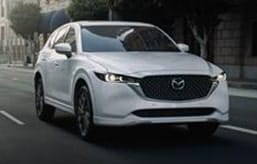- The GTS model returns to the Panamera lineup for 2025.
- This is the sportiest Panamera variant on offer.
- V8 power, adaptive suspension and a sport exhaust system are standard.
2025 Porsche Panamera GTS First Drive: Horsepower Isn't Everything
The best-driving Panamera returns for 2025
The third-generation Porsche Panamera debuted for 2024, offering improved in-car tech, more powerful engines and updated exterior styling. Porsche didn't mess with the car's basic formula; instead, it tweaked what made the Panamera a successful sport sedan with touches drawn from newer models like the all-electric Taycan.
While the new Panamera launched with a handful of trims, some previously available variants were notably absent from the 2024 lineup. That's been rectified for 2025, with Porsche offering two new V8-powered models: the sporty Panamera GTS and the top-of-the-line Panamera Turbo S E-Hybrid.
The Panamera GTS has always been an interesting proposition. It's never been the fastest or most powerful Panamera, but it's generally been the best to drive. Porsche's GTS cars are meant to be the sportiest road-focused versions of their respective models. Turbo models might make more power, but fast and sporty are entirely different.
What makes a GTS?
The GTS trim sits right in the middle of the Panamera lineup, between the Panamera 4S E-Hybrid and the Turbo E-Hybrid. Power comes from a 4.0-liter twin-turbocharged V8 engine that makes 493 horsepower and 486 lb-ft of torque, slightly up over the last Panamera GTS. This is the same V8 that's in the Panamera Turbo E-Hybrid and new Turbo S E-Hybrid, though the GTS makes do without the hybrid components. The lack of a battery pack makes the GTS nearly 700 pounds lighter than a Turbo S E-Hybrid.
The V8 is paired with an eight-speed dual-clutch automatic transmission that sends power to all four wheels. The GTS' all-wheel-drive system comes standard with torque vectoring, which shuffles power side to side between the wheels, an option on most other Panameras. Porsche claims the Panamera GTS should go from 0 to 60 mph in 3.6 seconds. Given that Porsches tend to overperform in our testing, we suspect the automaker might be slightly conservative with that figure.
But it's not just the powertrain that sets the Panamera GTS apart. The car sits 10 millimeters lower to the ground than other Panamera models. Not only does the lower ride help with weight balance and reduce body roll in a corner, but it also gives the Panamera GTS a sporty, purposeful presence. The adaptive air suspension's tuning has been revised, too, with a slightly stiffer setup than other Panamera models. Other suspension upgrades include beefier anti-roll bars and a lower spring rate.
Standard features on the GTS include 21-inch wheels with center-locking hubs, 18-way power-adjustable sport seats, the aforementioned torque-vectoring differential, a sport exhaust system and Porsche's Sport Chrono package. The package — optional on other Panamera models including the Turbo S E-Hybrid — adds a dash-mounted analog stopwatch, some performance menus in the infotainment system and an additional drive mode (Sport Plus) compared to non-Sport Chrono models.
The sportiest Panamera
SoCal freeways are notoriously bumpy, but the Panamera GTS seems nonplussed by the uneven surfaces around the Edmunds office. That's good, given the number of Porsche cars sold in the greater Los Angeles area. Bumps that would pound your spine in some other sport sedans are muted in the Porsche, a credit to the adaptive suspension's tuning. This might be the sportiest version of the Panamera, but Porsche hasn't forgotten that this sedan needs to be a capable daily driver too.
North of Los Angeles on the winding Angeles Crest Highway, the Panamera GTS moves with some verve. Rotating the drive mode dial to Sport Plus immediately sharpens everything up. Shorter shift times, quicker throttle response and a more hunkered-down ride height are among the changes. The GTS is not a wholly different car when in Sport Plus, but everything feels slightly sharper and more responsive.
Porsche's flat-six engines might get most of the attention, but the company makes some impressive V8s, too. There's lots of low-end torque, and the power comes on smooth and easy all the way to the engine's 6,800-rpm redline. The eight-speed automatic is snappy, and the gearing is short enough that you're never out of the powerband.
The Panamera is a heavy car — Porsche lists the weight for the GTS at 4,639 pounds — but it hides its heft well. Body roll is minimal thanks to the adaptive suspension, and the tight, direct steering makes the Panamera feel smaller than it actually is. The brakes hold up well, too, even on the downhill section of my drive, where lesser brakes might overheat and fade. While I think it might feel porky and overtaxed if you put the Panamera GTS on a proper road course, it didn't show any sign of slowing down on the street.
Is it worth the price of admission?
With the GTS, all the right performance options — adaptive suspension, Sport Chrono, etc. — are already standard, paired with things like a non-hybrid V8 that's unavailable in any other Panamera. The GTS starts at $156,195, which is about $50,000 more than a base Panamera, but is more than $70,000 less than the range-topping Turbo S E-Hybrid.
Porsche's GTS models are never the fastest or most powerful versions of their respective vehicles, but they tend to balance comfort and performance better than other variants. The Panamera Turbo S E-Hybrid might be faster and more powerful, but the extra speed doesn't make driving any more fun. Is the Turbo S E-Hybrid worth another $70,000? I don't think so. Use the savings for something good, like Porsche's paint-to-sample option.








 by
by  edited by
edited by